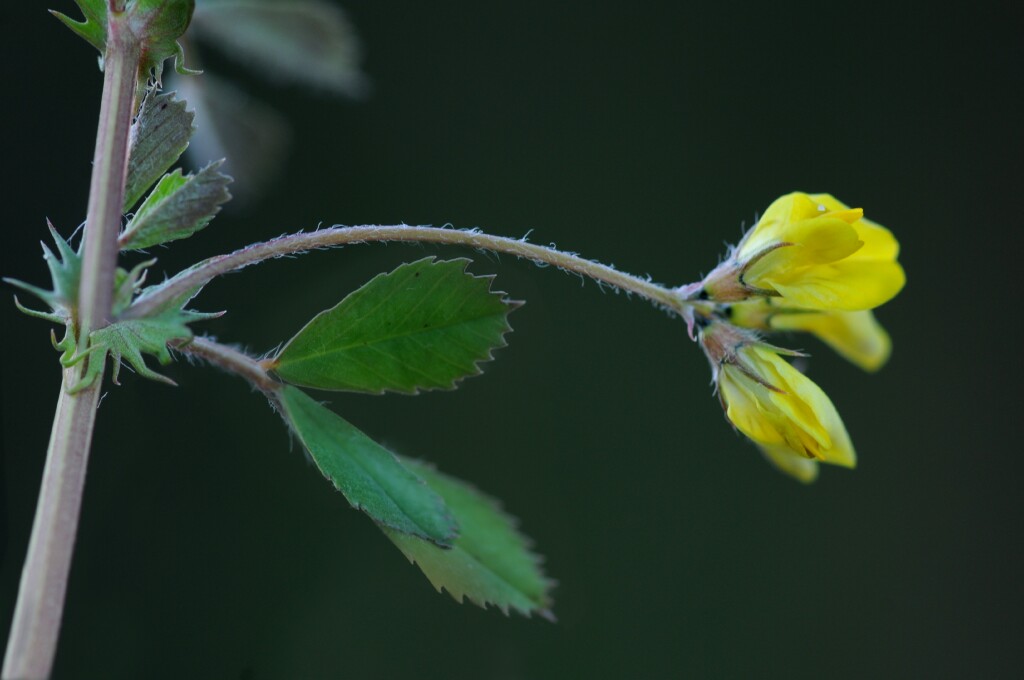Medicago truncatula
Gaertn. Barrel MedicProstrate or ascending annual herb; stems 15–80 cm long, sparsely hairy; hairs simple. Leaflets obovate, 5–15 mm long, 3–20 mm wide, serrate or dentate towards apex, upper surface glabrescent, sometimes with darker flecks or a dark central patch, lower surface appressed-hairy, apex rounded or subacute with a terminal tooth; stipules to c. 10 mm long, dentate to laciniate, lower surface hairy. Inflorescence 1–5-flowered; peduncle 0.5–2 cm long, equal to or shorter than subtending petiole. Pedicels to c. 2 mm long; calyx 3–5 mm long, teeth longer than tube; corolla yellow; standard 4.5–7 mm long; wings shorter than keel. Pod with 4–8 coils, cylindric, 5–10 mm long, 6–11 mm diam., sparsely hairy, spiny; coil hard-walled, edge broad, ridged; face obscurely veined, veins scarcely anastomosing; marginal vein thick, raised above level of submarginal veins; grooves slight; spines 7–11 on each side of coil, 1–4 mm long; seeds 3–12, to c. 4 mm long, yellowish. Flowers Sep.–Dec.
LoM, MuM, Wim, VVP, VRiv, MSB, RobP, MuF, GipP, OtP, Gold, NIS. Naturalised all mainland States. Native to the Mediterranean. Scattered widely across northern and western Victoria on a variety of soils, in pastures, disturbed ground and along road verges.
Heyn (1963) recognized 3 varieties based on the number of pod coils and the orientation of the pod spines, but according to Lesins & Lesins (1979) these are not soundly based. The Australian material is very variable and displays a wide range of pod shapes and spine orientation and length.
Jeanes, J.A. (1996). Fabaceae. In: Walsh, N.G.; Entwisle, T.J., Flora of Victoria Vol. 3, Dicotyledons Winteraceae to Myrtaceae, pp. 663–829. Inkata Press, Melbourne.
 Spinning
Spinning


